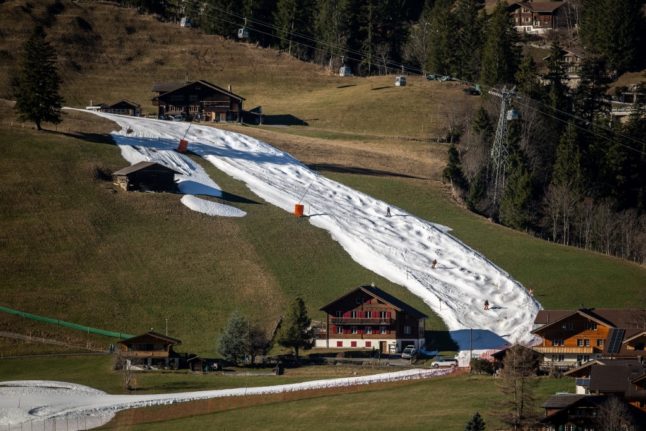Christoph Schuck, a scientist at the Technical University of Dortmund in Germany, came to this conclusion after analysing Switzerland’s 545 ski areas.
“Either they will most probably have to stop their activities in the medium term or they will have to invest in artificial snow,” he told Swiss-German daily NZZ in an interview published on Saturday.
The study showed that even high-altitude resorts were at risk, but the size of the resort made a difference.
“Until now, only resorts which operated fewer than seven facilities or primarily ski lifts have had to close,” said Schuck.
READ ALSO: ‘Bike instead of skiing’: Switzerland’s snowless ski slopes set to close
There are still some resorts able to boast of having natural snow for visitors to ski on, but Schuck says resorts won’t be able to bank on this to promote themselves for much longer.
The problem is that consistently snowy winters are not expected in the long term.
Schuck said that his researcher colleagues predicted climate change would lead to shorter winters as well as more limited snowfall, adding that this trend was more pronounced in the Alps than elsewhere in Europe.
This means that in future, snow canons – justifiably unpopular as they eat up huge amounts of energy – would be necessary to guarantee sufficient snow for tourists to want to continue visiting ski resorts in winter.
“The alternative [to snow canons] in the future for many resorts would be offering a very limited number of pistes or none at all,” he said.
Even if resorts switched their focus to activities, such as hiking, snowshoeing or cross-country skiing, this would still not compensate for the losses caused by the disappearance of a ski area because many other activities, such as ski and snowboard rentals, hotels and restaurants, also depend on it, explained Schuck.
In short, it’s not looking too rosy for winter tourism.
“Alpine tourism has already lost popularity in recent years. If the ski lifts in the valleys, which offer a good starting point for many children, disappear, this sport would be lost for the next generation,” he said.
READ MORE:



 Please whitelist us to continue reading.
Please whitelist us to continue reading.
Member comments